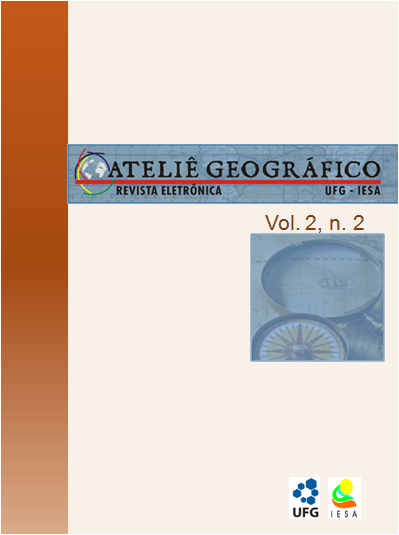GEOGRAPHY OF EVERYDAY LIFE: AN INTERPRETATION BASED ON THE METHODOLOGY OF SOCIAL INTERACTIONISM OF ERVING GOFFMAN
DOI:
https://doi.org/10.5216/ag.v2i2.4708Abstract
The study of everyday life involves the analysis of the actions of individuals in general and their relations with other individuals. Hereby, space can be considered as the basis which enables the connection between these different elements. Its comprehension is bound to the immediate apprehension of the everyday world. For Erving Goffman, everyday life can be compared to a theater where individuals perform different roles and do interact with other individuals through physical and verbal actions. In this sense, a neighborhood’s space can be understood as a stage where are different practices are performed by individuals and social groups. As such, the individuals behave as actors; they are the main protagonists of action building their own social structures. Therefore, specific moments have to be defined which do avoid estrangements between the persons involved. In everyday life, such a staging refers directly to spaces of materiality and their representations. As such, this methodology is a contribution to Social geography paving the way to an integrated analysis on the investigation of spatialities of everyday world. Key-Words: everyday life, lifeworld, representations, geography of everyday life.Downloads
Download data is not yet available.
Downloads
Published
2008-09-07
How to Cite
GIL, Ana Helena Correa de Freitas; GIL FILHO, Sylvio Fausto. GEOGRAPHY OF EVERYDAY LIFE: AN INTERPRETATION BASED ON THE METHODOLOGY OF SOCIAL INTERACTIONISM OF ERVING GOFFMAN. Ateliê Geográfico Journal, Goiânia, v. 2, n. 2, p. 103–118, 2008. DOI: 10.5216/ag.v2i2.4708. Disponível em: https://revistas.ufg.br/atelie/article/view/4708. Acesso em: 15 dec. 2025.
Issue
Section
Articles
License
Autores que publicam nesta revista concordam com os seguintes termos:- Autores mantém os direitos autorais e concedem à revista o direito de primeira publicação, com o trabalho simultaneamente licenciado sob a Licença Creative Commons Attribution que permite o compartilhamento do trabalho com reconhecimento da autoria e publicação inicial nesta revista.
- Os autores não serão remunerados pela publicação de trabalhos na Revista Ateliê Geográfico. Além disso, os conteúdos publicados são de inteira e exclusiva responsabilidade de seus autores, ainda que reservado aos editores o direito de proceder a ajustes textuais e de adequação às normas da publicação.
- Autores têm permissão e são estimulados a divulgar seu trabalho online (ex.: em repositórios institucionais ou na sua página pessoal), já que isso pode gerar alterações produtivas, bem como aumentar o impacto e a citação do trabalho publicado (Veja O Efeito do Acesso Livre).


